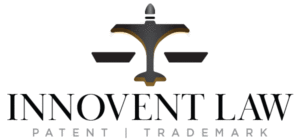From Mind to Market: A Step-by-Step Guide to Realizing Your Invention
Welcome back Innoventors. Today we will be navigating the journey from a brilliant invention to a commercially viable product that requires not just creativity but also a strategic understanding of the patent process. For entrepreneurs and inventors in sectors like fintech, aerospace, and software, protecting your innovation is critical. This expanded guide offers a detailed roadmap for patenting your invention, underscored by our expertise in the field.
Step 1: Validate Your Idea
Validation goes beyond confirming the need for your invention; it involves ensuring your idea is technically feasible and commercially viable. This involves:
- Market Research: Analyze market trends, potential customer needs, and existing solutions. Use surveys, focus groups, and industry reports to gather data.
- Competitor Analysis: Identify direct and indirect competitors. Understand their offerings, strengths, and weaknesses.
- Feasibility Study: Assess the technical feasibility and economic viability of your invention. This may require consulting with industry experts or potential users.
Explore what can be patented to ensure your idea meets the criteria for patentability.

Step 2: Conduct a Patent Search
A comprehensive patent search is crucial for identifying any existing patents or patent applications that resemble your invention. This step involves:
- Using Online Patent Databases: Utilize tools like USPTO’s Patent Public Search, Google Patents or EPO’s Espacenet to search for patents.
- Analyzing Patent Classifications: Understand the classification system to narrow down your search to relevant fields.
- Consulting a Patent Professional: Consider hiring a patent attorney or agent to conduct a thorough search and interpret the results accurately.
Learn about international protection for patents to understand how to protect your invention globally.

Step 3: Define your goals with this invention: to develop a prototype, look for a licensee or both?
Being clear on your vision and goal with this invention is the best time you will spend before diving into this journey. What are your goals with this patent? Is it to obtain a monopoly in the market on your invention and stop others from making and selling your invention, it is to monetize your invention, or it could be a combination.
A working prototype can help you test your invention’s functionality, design, and appeal to potential users or investors. Key actions in this step include:
- Prototype Development: Build a working model of your invention. For software or apps, this could be a beta version.
- Testing and Feedback: Test your prototype under different conditions and get feedback from potential users.
- Iterate: Use the feedback to refine and improve your invention.
It is worth noting that you don’t need a working prototype or even a prototype for that matter to obtain a patent on your invention. As long as you have enough information to allow someone skilled in that field to make the invention, you can get a patent.

Step 4: File Your Patent Application with Specialist Guidance from Innovent Law
Navigating the patent application process requires not just legal knowledge, but a deep understanding of technical nuances and strategic foresight. This crucial phase not only secures the legal protection of your invention but also sets a strong foundation for its commercial journey. Here’s how Innovent Law can guide you through this intricate process:
- Crafting a Detailed Application: Begin the journey with a comprehensive description of your invention, detailing its operation and unique aspects. Complement your narrative with precise drawings or diagrams that capture your invention’s essence. For software inventions, detailed flowcharts or system diagrams are essential to illustrate functionality.
- Choosing the Right Patent Type: Identifying the most suitable patent type for your invention—whether a utility, design, or plant patent—is crucial. Each type offers different levels of protection and caters to various kinds of inventions.
- Leveraging Our Specialized Knowledge: Innovent Law boasts over five years of collective experience in patent law, with a specialized focus on industries like fintech, aerospace, software development, and others. Our deep industry knowledge and legal acumen enable us to provide tailored advice that aligns with your invention’s specific needs.
- Guiding You Through the Filing Process: Our understanding of the patent filing timeline, along with the meticulous legal requirements, positions us to steer our clients through each step of the application process effectively. Our aim is to ensure your application is both compliant and positioned for success.
- Sidestepping Common Mistakes: Familiarity with the typical pitfalls inventors encounter allows Innovent Law to offer guidance that significantly enhances the probability of your patent being granted. Partnering with us means accessing a wealth of knowledge on how to avoid these common errors.
Why Partner with Innovent Law?
Opting for Innovent Law means choosing a team that is not only proficient in the legal landscape but also deeply ingrained in the industries we serve. Our comprehensive experience with sectors such as fintech, banking, aerospace, and software, combined with our dedicated focus on patents, uniquely equips us to understand your invention’s potential and ensure its successful protection.
Secure your invention’s future with a team that understands both the legal and industry-specific nuances of patent protection. Reach out to Innovent Law today to discover how our specialized team can assist you in navigating the patent application process, safeguarding your innovation, and setting the stage for its success. You can also schedule time to talk to one of our teammates here.
Avoid common pitfalls with Innovent Law’s guide on common patent mistakes.

Step 5: Market and License Your Invention
With your patent application filed, you’re ready to bring your invention to the market. Effective marketing and potential licensing are your next steps:
- Marketing: Develop a marketing strategy that targets your ideal customer segments. Attend industry trade shows, use digital marketing, and network to spread the word.
- Licensing: If applicable, explore licensing agreements with companies that can manufacture, distribute, or incorporate your invention into their offerings. Licensing can provide a revenue stream without the need for you to handle production and sales directly.
Understand the intricacies of who owns the rights to a patent and how to navigate licensing agreements effectively.
Conclusion: Bringing an invention from concept to market is a complex but rewarding journey.
By following these detailed steps and leveraging professional legal guidance, you can protect your invention, maximize its commercial potential, and navigate the patent process with confidence.
Ready to take your invention to the next level? Reach out to us to explore how we can assist you in patenting your innovation and bringing it to market successfully.

